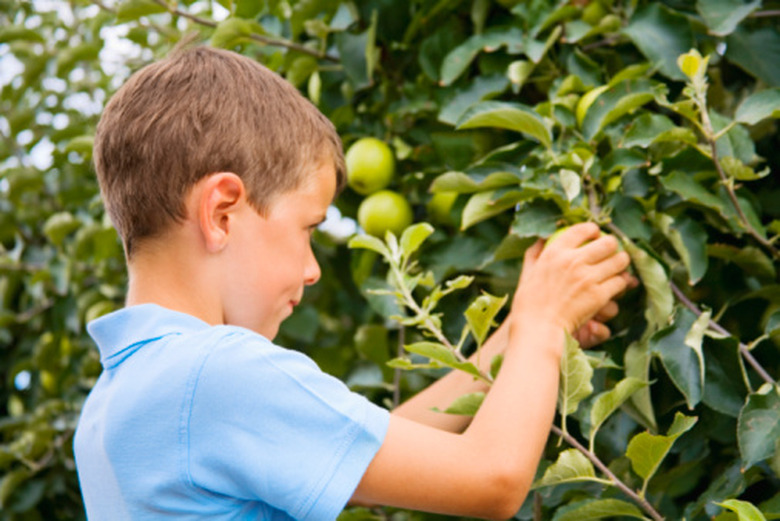Orange Spots On Apple Tree Leaves
Apple trees with orange spots on the leaves are suffering from a fungal disease called cedar-apple rust that affects a range of trees. The primary sign of cedar-apple rust is the orange or reddish spots it causes to appear on the leaves of the trees it infects. Caring for an apple tree with cedar-apple rust is important for ensuring healthy fruit production.
Cedar-Apple Rust
Cedar-apple rust is a fungal disease. The fungus lives on both juniper trees, including the red cedar and ornamental junipers, and apple trees and must spend part of its life cycle on a juniper tree before affecting apple trees. The fungus causes reddish or orange spots to appear on the leaves of the apple tree, as well as galls, which form on juniper trees. Galls are spore-producing clusters that spread the disease to nearby trees.
- Apple trees with orange spots on the leaves are suffering from a fungal disease called cedar-apple rust that affects a range of trees.
- The fungus causes reddish or orange spots to appear on the leaves of the apple tree, as well as galls, which form on juniper trees.
Effects
Cedar-apple rust is detrimental to the health of an apple tree, as well as its harvest. Over time, an affected apple tree may be unable to produce fruit. Early infections can cause leaf loss, a decline in the vigor of the tree, premature fruit drop and low fruit quality. Cedar-apple rust is especially damaging to young trees. Dry weather and periods of drought make cedar-apple rust more damaging to trees.
Fungicide
A scheduled fungicide spray on apple trees is key to the control of cedar-apple rust. Apply fungicides when the apple tree begins to produce buds and throughout the growing season. Follow the directions on the fungicide to avoid damaging the tree or the environment. Fungicide applications help kill the spores of cedar-apple rust and prevent the fungus from spreading to other trees in the orchard or garden.
- Cedar-apple rust is detrimental to the health of an apple tree, as well as its harvest.
- Dry weather and periods of drought make cedar-apple rust more damaging to trees.
Cultural Controls
Plant apple trees that are resistant to cedar-apple rust to avoid problems with this fungal disease. Cut down and destroy any dead apple or juniper trees that could become a host to the fungi. If a tree does become affected, prune damaged branches and remove any affected leaves or fruit. Pick up leaves, branches and fallen fruit to prevent them from becoming a host for the spores, which can lead to further infections in the following seasons.
